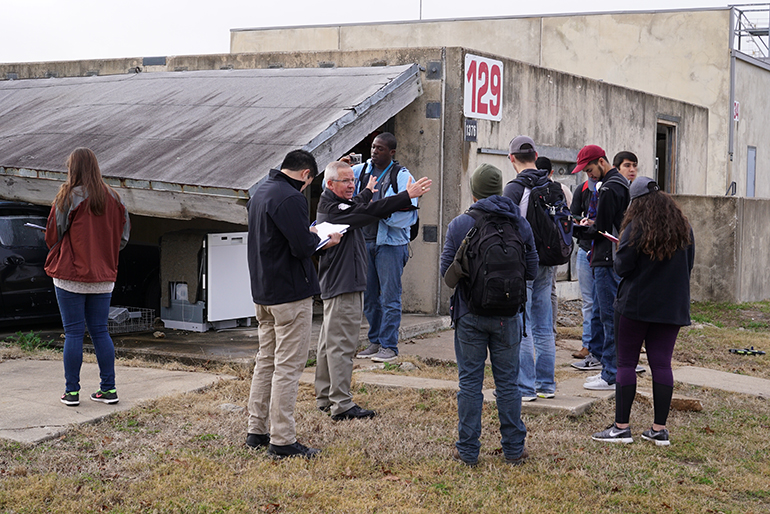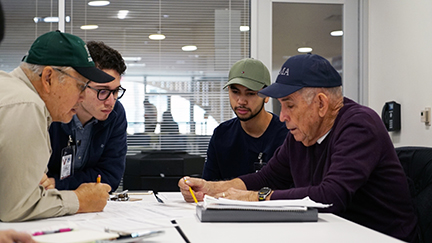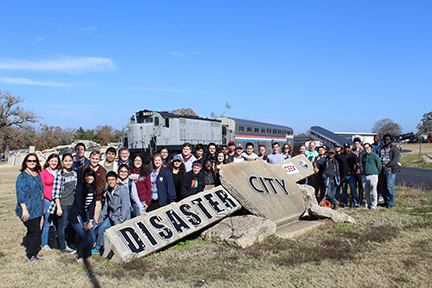
The wind and water have subsided after Hurricane Harvey swept through Texas in August, but the road to recovery is long. To help the process move along, engineering students from Texas A&M University spent their winter break assisting the Federal Emergency Management Agency (FEMA) where they could.
"I wanted to contribute to assisting my hometown (Houston) while also working with fellow engineers and engineering students," said Irfan Beg, a senior mechanical engineering student. "My father's car was damaged severely. One of my best friends from high school had water damage in the carpets and tiles on the floors of his house."
Thirty students from different engineering majors volunteered for a 10-day internship with FEMA. All interns first went through five days of training with site inspectors and then spent 10 days in the field.
"We were very happy that these students chose to invest time on this and take part in this program and provide some service for the state," said Magda Lagoudas, executive director for industry and nonprofit partnerships.
 Traci Brasher, recovery division director for Region 6 of FEMA, said the federal agency viewed this first of its kind internship as a chance for students to gain knowledge about emergency management as well as open up future opportunities.
Traci Brasher, recovery division director for Region 6 of FEMA, said the federal agency viewed this first of its kind internship as a chance for students to gain knowledge about emergency management as well as open up future opportunities.
"I don't know that we've done anything like this any faster with any university ever," Brasher said. "I can't say enough about the partnership that we have gained between FEMA and Texas and the university in order to do this."
Freshman engineering major and Engineering Honors student Lorenzo Martinez said the program sounded like a prime opportunity to help his hometown of Houston and gain internship experience early in his college career.
"I felt that I could give back and do my part to help out in any way I could," Martinez said. "Also my parents, both of whom are first responders, had to help and be out during the storm, so I figured I would pay their hard work forward myself."
James Stone, site inspector for the FEMA disaster team, said he had the opportunity to work with some of the students during the December training, and the students jumped right in and were not afraid to tackle anything.
"I think they have experienced a little reality check in their life, and they will go forward with a different attitude on what it takes to go out there and do the work," Stone said.
The student-inspector teams were sent into the field to assess public infrastructure as part of FEMA's public assistance program. Assignments included meeting with applicants to identify, measure and quantify structure damage in public areas.
"When we did go out to a site in Houston affected by Hurricane Harvey, I got to shadow a site investigator on a community park that had been under five feet of water or more during the flooding," said civil engineering junior Anh Duong. "It was a very unique experience."
During site visits, students were expected to talk with the public to record damage, then report and file all the information.
"The biggest thing I learned was how meticulous everything at FEMA is," said ocean engineering junior David Nelle. "Every detail of every damage is documented, and everything has to be denoted a certain way. There are specific ways to denote everything."
 Douglas Edge, biomedical engineering senior, said he gained knowledge from the different individuals from FEMA he worked with.
Douglas Edge, biomedical engineering senior, said he gained knowledge from the different individuals from FEMA he worked with.
"I learned about construction and civil engineering principles," Edge said. "I learned about the various locales that those folks came from-many of FEMA's employees are not originally from Texas. I also learned about leadership and management in an office setting."
Although many students completed their work over the winter break, they have until April to complete their internships. Some students, such as general engineering freshman Isabel Londrigan, are planning to complete their work over Spring Break in March.
"These site inspections will lead to FEMA granting the state the funding they need to get Houston's facilities back on its feet and in full recovery," Londrigan said.
For many students the internship opened their eyes to the enormous role site inspectors play in the aftermath of disasters.
"The site inspectors are the eyes and ears for everyone else," said mechanical engineering sophomore volunteer and Engineering Honors student Rebekah Legband. "They are the ones who actually see the damage in person, which makes the information they bring back with them vital."
"Site inspections mark the beginning of (the residents') road to recovery," said Jason Nguyen, industrial engineering senior.
Audree Co, manufacturing and mechanical engineering tech senior, said the experience gave her a new vantage point on the recovery process, a sentiment shared by many of her fellow students.
"With FEMA I'm able to help as a financial liaison instead of a disaster relief volunteer," Co said. "This allows me to get a better understanding of the recovery process."